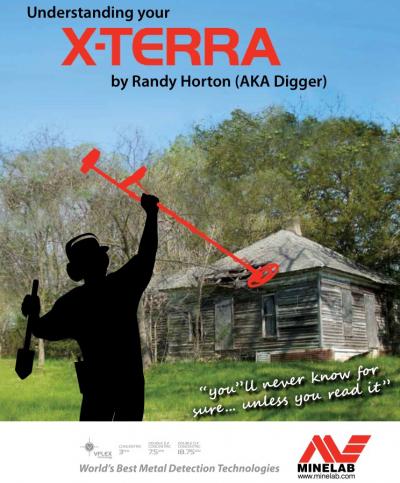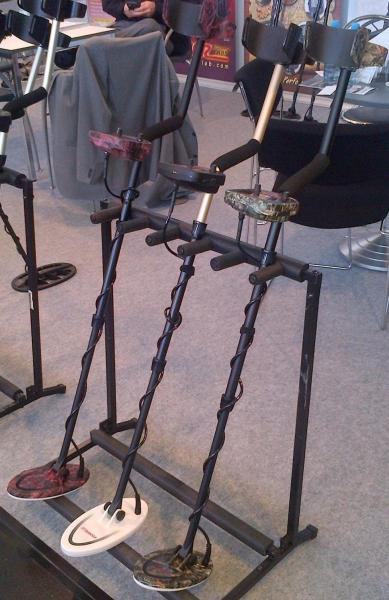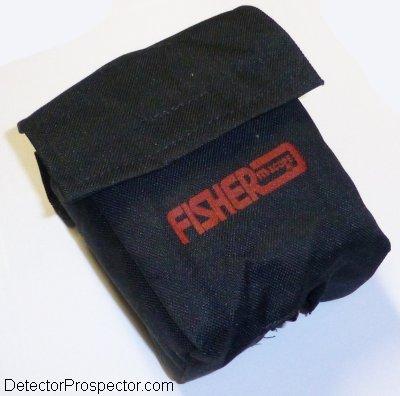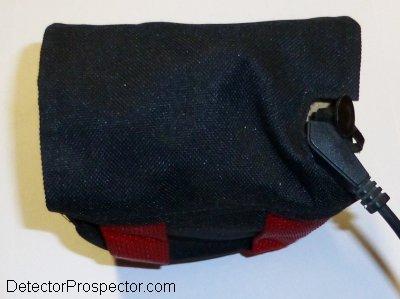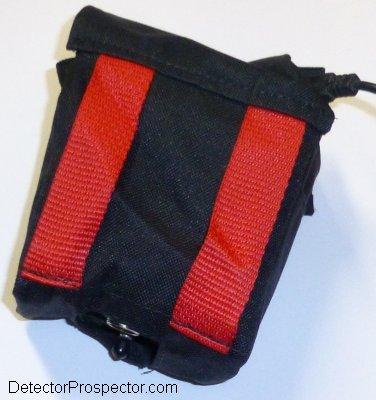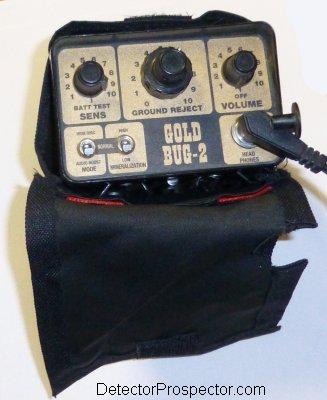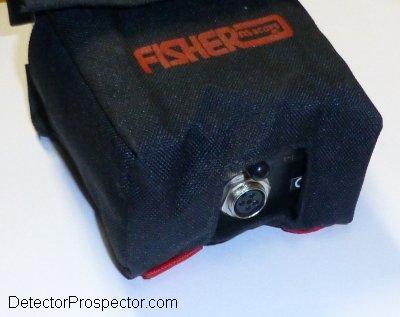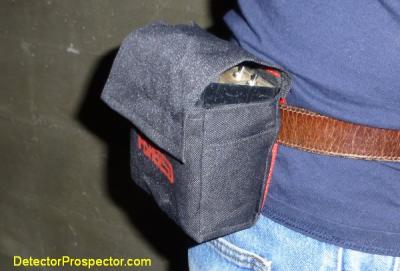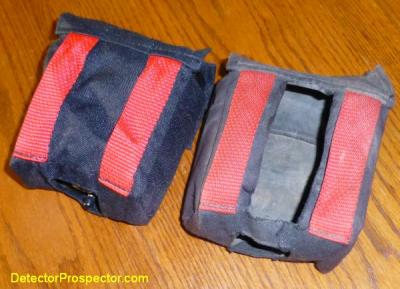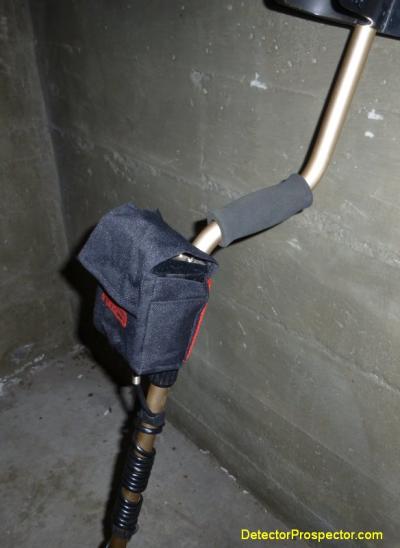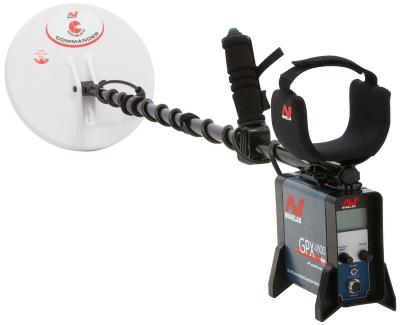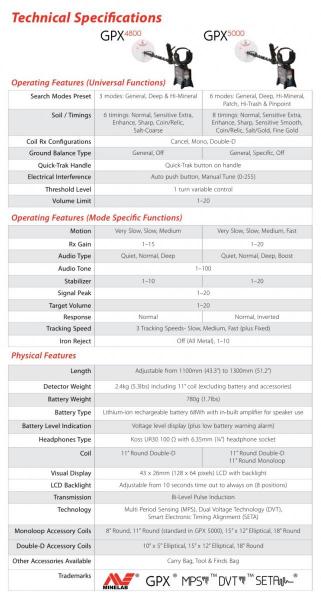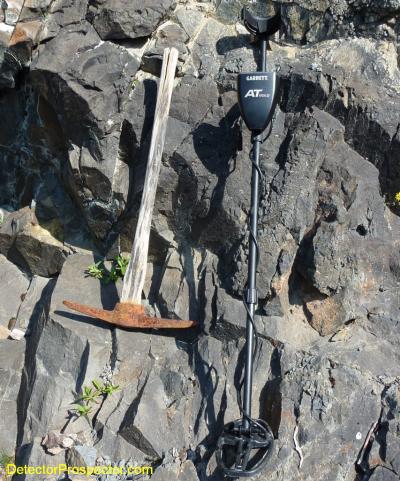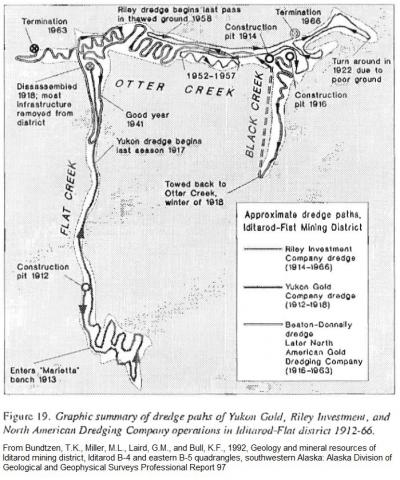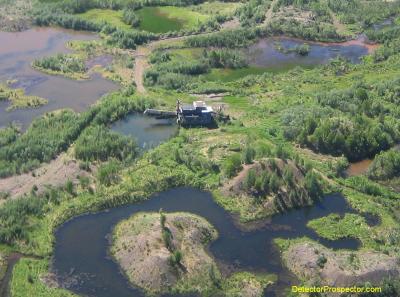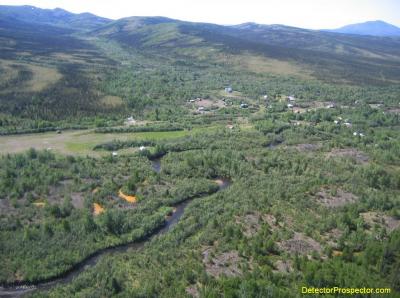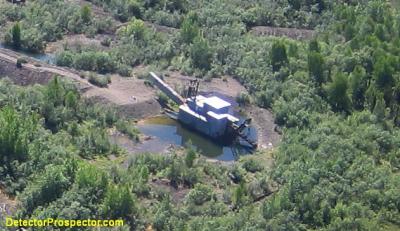-
Posts
19,773 -
Joined
Content Type
Forums
Detector Prospector Home
Detector Database
Downloads
Everything posted by Steve Herschbach
-
Hi Keith, I was a bit surprised to see your ATX for sale and I think you made the right move keeping it. Mine is a keeper for sure. I could elaborate but it can wait for tomorrow. Added 3/15/14 Garrett ATX vs Minelab GPX 5000
-
Hmmm, on one hand nothing new to report but I respect the ATX more than ever now after yesterday. It fares very well compared to the GPX 5000 and it makes it very difficult for me when engaging in the price vs payoff discussion. When you take price out of the equation the answer is clear. I have both and if I have to grab one to go prospecting I am grabbing the GPX. But the performance is close enough that I struggle with telling more casual detectorists they need to spend twice as much to get a GPX - almost three times as much in the case of the GPX 5000. I am mulling this over and am finally going to post my definitive ATX vs GPX review. I have been holding off until I had more time on the ATX but by now I have more hours on it than all but a handful of people. Look for a review tomorrow.
-

Great Expectations & X-Terra 705
Steve Herschbach replied to klunker's topic in Minelab X-Terra Forum
Actually sounds to me like you are doing it right by the number of non-ferrous targets you are digging. That is the name of the game. Still, you we lucky in that Minelab has made a fantastic book available for free - Understanding Your X-TERRA by Randy Horton at https://www.detectorprospector.com/files/file/139-understanding-your-x-terra/ -
Hey hawkeye, do not take the following personally. I am answering the question generically for anyone who may be reading and I am specifically speaking to people in the United States (in case Aussies are lurking). It is all about how much success you are currently having finding gold with a metal detector. If the amount of gold nuggets you have found so far with a metal detector is measured in ounces than the GPX 4800 is the better investment. The likelihood is you can pay for the difference in gold. If you do not have a proven history as a successful prospector than you simply may be spending extra money to not find gold. I figure the vast majority of nugget detectors in the US never pay for themselves ever. They get bought but never get used seriously enough to keep up with battery costs let alone paying for the detector. All you ever pay for in a detector is an edge in recovering targets. Usually that means that extra inch, or simply the ability to ignore rocks another detector beeps on. But the extra capability means nothing if not put to practical use in a good location. If you constantly hunt ground where bedrock is a foot or less the ATX is going to do a good job. If the gold in the location tends to be small, like a couple grams or less, the ATX is going to do a good job. The deeper the ground and the bigger the nuggets, the better the GPX looks by comparison. For me personally there is another factor. Pure ergonomics. When I go to Alaska this summer aiming to go detecting every day for 30 days for as many hours as I can each day, I would rather be handling the GPX from a physical aspect. The detector on arm is lighter, and I can change batteries or coils with no fuss, no muss. I have hundreds of coil options. For this reason only if both detectors had identical performance and an identical price I would be using the GPX. And for this reason only I am willing to pay more money for a GPX. If Garrett comes out with an ATX model that weighs around four pounds or less in a well balanced package that forgoes the special connectors on coils and headphones in lieu of standard connectors and a single drop in battery - and that has a good set of light weight coils - now I may very well put the GPX aside even if it might be the better unit for some gold in some conditions. For me the detector is a work tool and if it can measurably improve my working conditions and comfort than it may mean I hunt more and longer, and that may mean more gold. That is the detector I am waiting for, whether it be from Garrett, Minelab, or someone else Just my thoughts and applying my mental filters as regards detectors. You do have to think hard about and apply your own wants and needs. This may help - I am going to be testing a GPX against an ATX all day tomorrow! So I may have more to add to this discussion on Friday. In fact, you can count on it.
-
More than anything Ray I am impressed by your commitment to just keep getting out there and getting after it. That as you know is the real secret - detectors do not find gold sitting in closets. I seem to be getting caught up in one aspect of life or another that has kept me from getting out and hunting gold as much as I envisioned the last few months so I need to do something about that.
-

What the World Finds Gold With
Steve Herschbach replied to Rick K - First Member's topic in Nokta / Makro Metal Detectors
Details previously posted at http://www.detectorprospector.com/forum/topic/123-nokta-fors-gold-metal-detector/ -
Here is a nice little interview of electronic prospector Jonathan Porter of Australia. It was my good fortune to have JP as my host for over a month in Australia looking for gold in the Australian outback. I could not have asked for a better guide and host. JP is not only a superb prospector but a true gentleman. Check it out at http://www.abc.net.au/local/videos/2014/03/10/3960406.htm
-
Unfortunately waterproof detectors are problematic for manufacturers. It is a small market and the detectors have the highest warranty costs of any segment. So once a waterproof detector gets designed it tends to stay in service forever with minimal change. It would be nice to see a new waterproof PI from Fisher though since that niche has gone empty since they discontinued the Impulse.
-
I assume it is a Gold Bug decked out as a relic detector. I do not care what they call it as long as it finally comes with the 5" x 10" DD coil as stock. I wonder if anything electronic has changed? Iron volume would make the relic crowd happy. It is an outdoor expo in Germany with far more hunting enthusiasts than metal detector users. So very little chance anyone would see it and know enough to care to post details. It looks exactly like my Gold Bug Pro with the 5" x 10" DD coil mounted. F 19 sort of implies 19 kHz. The F series is defined on the Fisher website at http://www.fisherlab.com/hobby/deetectors-f-series.htm as MULTI-PURPOSE VISUAL & AUDIO TARGET ID DETECTORS The Gold Bug Pro is doing well for the relic hunters but the name was not a good fit. Fisher may simply have rebranded it or the lower price Gold Bug and included the popular 5" x 10" DD as stock equipment and camo options to boot. This allows them to market it as a relic detector and part of the F series. It would resonate more with people in Europe than a detector marketed as a prospecting machine. It would also explain the lack of fanfare because if true there really is nothing new here. If all there is to get people going is speculation then let them speculate. Reality is probably boring. I put my money on Gold Bug Pro with new decals and stock with 10" elliptical coil. That would be nice as I do think it is the best coil for the detector and right now only way to get it is as an accessory item or part of a dual coil package. So now you can finally get a Gold Bug Pro with the coil that should have been on it from day one. And a new name so sellers do not have to explain to relic hunters why they might be interested in a prospecting detector. Wave the magic marketing wand and now it is a relic detector. Pure guess on my part - I have no insider information on this unit. But if I am right it will be funny as in my role as a gold prospector I will end up recommending people buy the relic detector instead of the gold detector. Unless they finally offer the Gold Bug Pro with 10" elliptical without forcing the purchase of a dual coil package.
-
There is a case to be made that gold has bottomed. Supply is outstripping demand and we live in a world where ever more money is being created. Paper money is still backed by gold in that you can trade your dollars for gold any time you want. Now may be a good time for that. But the other play is to invest in gold mining stocks, which have suffered greatly as of late. Buying stocks when nobody else wants them does not always work but it does enough to consider. I am not expert in any of the above, and you can always find opinions for any side of this equation. The fact is nobody, even the so-called experts, really knows what is going to happen with gold prices. But here is a short and I think good analysis of three major gold stocks, Barrick, Newmont, and Goldcorp at Motley Fool for your consideration. http://www.fool.com/investing/general/2014/03/06/has-gold-hit-a-bottom.aspx
-
My Fisher Gold Bug 2 is more like a mining tool than a metal detector. As such it gets subjected to a lot of potential abuse. In particular, I like to sit it upside down, control box on the ground, while I wave my scoop over the bottom of the coil looking for a tiny nugget. I have some money invested in this tool however and I want to take care of it. So I use a little known Fisher secret - the holster / control box cover for the Gold Bug 2. As you may or may not know the Fisher Gold Bug 2 is designed to be taken off the rod assembly, and by way of built in slots put on a belt and hip mounted. This is great for making the rod assembly super light for overhead use, like working a cut bank or steep tailing piles. It also puts the control box under your rain coat for protection. Note that bending over with the box on front of your hip continually bends the coil cable where it attaches to the box and will lead to premature cable failure. I therefore recommend mounting the box on your rear hip as shown. This is over my shirt for the photo, normally my belt would be holding my pants up also! Fisher Gold Bug 2 Belt Slots Fisher Gold Bug 2 Hip Mounted The holster of control box cover for the Gold Bug 2 is made of heavy waterproof cordura nylon with belt loops and a flip cover with velcro closure. It has a hole on the bottom to attach the coil cable and access the threshold control. The top cover has a notch for the headphone jack. The cover is originally designed as a hip mount holster option, using the loops incorporated into the holster instead of those on the control box itself. I wanted to use my control box cover, not for hip mounting, but while rod mounted. Here is a new cover next to my old cover with the slot I cut to allow the box to rod mount with the cover on. Just used scissors, never had an issue with tearing later. The final result - a fully protected Gold Bug 2 control box ready to lay in the dirt. The cover has a tiny pocket on each side but I have never used them. The top flips open easily for a quick control adjustment if needed or can be tucked in and left open if desired. This cover was made for years for the original Gold Bug and Gold Bug 2 and also fits the old 1225X and 1235X models. It was discontinued for several years and then made available again. Last MSRP I saw was $18.95 and part number 103696. Most Fisher dealers probably do not even know this exists so you may have to look around to actually find one in stock someplace. One of those hand made things that probably will be discontinued sometime so I got the second one just to have two.
-

Tesoro Lobo Ground Balance Mod?
Steve Herschbach replied to Rod K's topic in Compass, D-Tex, Tesoro, Etc.
I do not think Keith Wills is a member here but I could be wrong. According to this post at Link deleted since Findmall update broke all old links by Monte there are two trimmer pots that exist and need adjusting. Many old Tesoro designs had the discrimination tied to the ground balance setting, so maybe the second trimmer adjusts the disc after the GB is set? Just speculating. Could just email or call Keith via his website link I provided above. If you find out anything please let us know. The designer, Dave Johnson, posts on TreasureNet as woof! with the exclamation mark. You could PM him also. Long shot but you never know. Or he may see your post there and respond. -

Tesoro Lobo Ground Balance Mod?
Steve Herschbach replied to Rod K's topic in Compass, D-Tex, Tesoro, Etc.
Never heard of anyone doing it. I am fairly sure all metal is auto ground tracking only. However, the disc mode has a factory preset ground balance and I would think there is a internal potentiometer to set it. Keith Wills would probably know. http://www.brokendetector.com -

Minelab GPX 4800 Vs GPX 5000
Steve Herschbach replied to Steve Herschbach's topic in Minelab Metal Detectors
Thank you for that JP! The earlier the model the easier the decision gets. I upgraded at every new model, and for me the big difference was in going from SD to GP, and then from GP to GPX. But some steps along the way were incremental and harder to justify unless you are out prospecting a lot and finding substantial quantities of gold. If that is the case, any edge, no matter how small, is generally worth it. -
I actually am not buying the heist story. The coins were stacked in sequential years. Coins stolen from the mint would probably be all one year. The coins sound to me more like a person who every year got one gold coin and put it away. Not a bad saving system if you think about it; if I had done that my whole life I would have a nice little stash of my own!
-

Minelab GPX 4800 Vs GPX 5000
Steve Herschbach replied to Steve Herschbach's topic in Minelab Metal Detectors
I will ask JP to chime in but not much to recommend replacing a GPX 4500 with a 4800 in my opinion. There is the new Coin/Relic Timing and an improved Enhance Timing, plus improved electronics for increased target sensitivity and ground balance performance. The Coin/Relic is of no use to most people so it boils down to better? electronics. The Sensitive Smooth mode exists in the 4500, was removed in the 4800, and put back in the 5000. Audio type Boost exists in the 4500, was removed in the 4800, and put back in the 5000. It appears to me part of Minelabs plan was to widen the gap between the 4800 and 5000 by removing some 4500 features from the 4800. I can't honestly tell you I think selling a 4500 to get a 4800 would get you much other than a new warranty. -
If you have looked at my various articles you will see pictures of the tube above and below waterline and in between. The main issue I see is riffle clearing. In theory fully submerged is how these things are designed to run. But if underpowered back pressure can make for a system too slow to get proper riffle action. In those cases I found raising the tube and allowing air to enter the tube would dramatically increase the velocity over the riffles. In other words, there is no right or wrong. You have to adjust the system to get optimum riffle action, and that can be a bit difficult when you can't see inside. I often reached up from the rear into the tube and felt the riffles to make sure they were not packed. Sometimes a hump of material was discovered midway up the tube covering half the riffles! Not good. Forward and back tilt also matters though less than you would think because you are dealing with an enclosed forced system. If the unit has enough power the rear can be higher than the front and you still do ok as long as the velocity over the riffles is sufficient. I do not recommend it however. Placing rocks on the rear floats to get a bit more tilt was something I did often though, and sometimes up front to slow things up a bit. My tube was bolted in a fixed position so that was my method. It is possible to mount the tube such that the angle can be adjusted however so consider that option. I opted for simplicity. Build it, use it, watch the riffle system carefully, and then adjust as needed. Never hog when in the gold! No matter what you can bury those riffles through inattention and that will pump gold out the back. More gold than is already headed that way in any case. Lots of articles on subsurface dredges at Steve's Mining Journal plus the one I wrote for the ICMJ Prospecting & Mining Journal at http://www.icmj.com/article-notloggedin.php?id=2741
-
The MInelab GPX 4800 was released at the same time as the GPX 5000. The Minelab 4800 was intended as the next release after the GPX 4500, but before it was released Minelab came up with a couple new refinements different enough to warrant yet another model, the GPX 5000. The 4800 therefore became a sort of "non-model" as most dealers and users focused on the GPX 5000 as the new top-of-the line detector. Most dealers do not stock the GPX 4800 and it may as well not exist for all the attention it gets. The fact though is that a GPX 4800 is basically a GPX 5000 less a couple timings. Details can be found in the GPX 4800 / GPX 5000 Brochure (excerpt of spec sheet at end of this post) but what it boils down to is the GPX 4800 lacks the Fine Gold and Salt Gold timings. Salt Gold is an improvement of the Salt Timing found on previous models that works better on salt flats and salt water beaches. Fine Gold is a bit misunderstood. Sensitive Extra is the best setting for pulling small gold out of most ground in the US. Fine Gold is intended for extremely mineralized ground. There are a lot of people who have decided Fine Gold is the magic setting but it really should not be used in milder ground where more powerful timings will do the job better. It really all boils down to the Fine Gold timing, and most people just went ahead and ponied up for the GPX 5000 for the extra $800. Steve's Guide to Differences Between the Minelab SD, GP, & GPX Detectors
-
That gold was mined from Myers Fork at Chicken, Alaska. Wire silver is far more common than wire gold. http://www.themineralgallery.com/silver.htm Chris has a photo of a great specimen on his page at http://nevada-outback-gems.com/prospect/gold_specimen/Natural_gold.htm Sixteenth picture down, from the Ground Hog Mine in Colorado. Theories of how these specimens form are few and far between. An intact specimen would be very valuable. Go find some more Ray!
-
You and I of course had a surrealistic conversation with some government people about this Chris. Our taxpayer money built this database but we are not allowed to access it directly. Of course the excuse was not that we must die if we know the locations but that we possibly could die if tempted to set foot on them and then our survivors might sue. I suspect that beyond liability however there is an element of simply not wanting to do anything that might help a prospector. I have not given up. Some parts of the database are out there. Apparently uranium mines are safe enough to know about even if gold mines are not. Feel like putting a little glow in your life? 15,000 uranium mine locations in a single database file at http://www.epa.gov/radiation/tenorm/pubs.html#database EPA and BLM however rather than make a single database available that lists gold properties forces you to dig deeper. Here is a good place to start http://www.abandonedmines.gov/mapdata.html
-
Hi Don, welcome to the forum! Ah, waterproof nugget detectors! A subject I have particular interest in these days. My main advice? Get the small round 5" DD 18.75 kHz coil for the X-Terra and go prospecting. It is waterproof to wading depths and if you can find a single gold nugget with it a waterproof gold detector may have merit. Prove the idea first, then make the investment. I will leave the question of gold detecting in the Dominican Republic aside though and stick to the detectors. First off, nearly all detectors with the exception of a few Minelab models (all Minelab PI detectors and X-Terra 705 Gold) come with waterproof coils and the ability to be submerged to the control box. Some older models like the Fisher Gold Bug 2 and Tesoro Lobo can be chest mounted which is great for wading. But if you want waterproof the field narrows considerably. In theory like with all nugget detecting you can use anything if the gold nugget is big enough and shallow enough. But what waterproof models would be best for gold detecting? First, I would caution you that for prospecting multiple tones is not very important. Rule number one is dig everything. Rule number two is that if you can't do rule number one, use no more discrimination than needed to barely reject ferrous targets. Which will miss gold but will result in far less digging in some areas. The iron rejection can be outright ignoring of the target or two tones, one ferrous, the other not ferrous. In low mineral ground you can in theory use any waterproof detector but for prospecting I would stick with detectors that can handle bad ground mineralization or hot rocks or both. Normal non-ground balancing PI detectors like the Tesoro Sand Shark or the White's Surf PI will do fine if the ground has even mineralization but will sound off on hot rocks. For that reason the only PI detectors I personally will consider are the Garrett Infinium or newer Garrett ATX. Both are ground balancing pulse industion (GBPI) detectors and so can handle the hot rocks. Both also have interchangeable coils, something the White's and Tesoro units lack since their coils are hardwired. One thing I also do not like about the Tesoro or White's units is you replace the batteries by accessing the circuit board area, a recipe for disaster if you do not get a perfect seal every time you replace the batteries. The Infinium and ATX have separate battery compartments that if flooded will not seriously harm the detector. on the plus side the Sand Shark and Surf PI are simple mono tone detectors given your expressed dislike for the Infinium tone system. Between the ATX and Infinium the ATX is hotter on small gold but the Infinium is half the price and the accessory coils are one third the price, plus the Infinium can be hip or chest mounted. However, the ATX is basically an improved Infinium in a different box. You still have dual tone responses, though they are mellower to the ear than the Infinium responses. If the dual tones really irritates you then the Sand Shark or Surf PI might be your better PI options while noting the other issues I have outlined. If the VLF realm two of the most popular water units are both multi-frequency models, the Minelab Excalibur and Fisher CZ-21. The White's Beachhunter is a less popular model but also multi-frequency. All three are designed to deal with salt water but they also lack an edge on small gold that makes them less desirable for prospecting. I usually recommend the Excalibur as a general purpose water detector but if I had to choose between the three for prospecting I would go CZ-21 due to it having a ground balance control and threshold based all metal mode plus ability to chest or hip mount. If you run in discriminate it features three tones with the odd caveat of putting nickel as a high tone target, a carryover from the original CZ design as a coin detector. In all metal the CZ-21 is mono tone. I lean small coils for detecting so the hardwired 8" coil would be my recommendation on the CZ for prospecting. The Tesoro Tiger Shark has potential as a single frequency unit running at 12.5 kHz with a ground balancing threshold based all metal mode. My only issue with it is the hardwired coil and accessing the control box to replace batteries. But it is a bargain priced detector perfectly capable of the job. Mono tone only - the disc mode is a simple single know target reject setting. Again, the smaller hardwired 8" coil option would be the way to go. A unit you would probably like is the Minelab CTX 3030 which outfitted with a 6" coil would be an ok prospecting detector with an edge on the Excalibur or CZ-21 owing to the smaller, hotter coil. However, it is a premium price detector and maybe not one to take the hard knocks prospecting but worth a mention. Finally, the best for last. The Garrett AT Pro (15 kHz) and AT Gold (18 kHz) are both reasonable priced VLF detectors waterproof to ten feet with interchangeable coils. The AT Gold comes with a smaller coil and has a ground balancing threshold based all metal mode. It also has a three tone disc mode. The recovery time on both AT models is much faster than the Ace series. Chart - AT Pro vs AT Gold. I have offered you a lot of options to consider. As always there are no right or wrong choices, just what works best for you. It sounds to me like the AT Gold has most of what you are looking for so you may want to research it more. PI is a tougher choice given your previous dislike for the Infinium. If the ground allows the Sand Shark may be more to your liking. As for me and my interest in the subject I want to try sniping California rivers using a detector. The Garrett ATX is my first weapon of choice but I will also give the new Minelab SDC 2300 a go when it is available.
- 2 replies
-
- minelab ctx 3030
- garrett at
-
(and 2 more)
Tagged with:
-
The March 2014 issue of the ICMJ Prospecting and Mining Journal just arrived in the mail. I have an article in it Gold Of The Iditarod Mining District, Alaska. I enjoyed this one because I have been to the Iditarod area in the past and may visit in the future, so the research I did may have some real world practical use for me. If you have an online subscription you can read the article at http://www.icmj.com/article.php?id=2349 Iditarod is the third largest gold producing district in Alaska with over 1.45 million ounces of gold and nearly 200,000 ounces of silver mined through 1990. Much of that production came from three bucket line dredges that operated on Flat and Otter Creeks. There are miles of tailing piles so you would think this might be a great metal detecting location but most of the gold found was small. There were a few large nuggets found on tributary streams but the chances of finding a large gold nugget in the bucket line tailing piles is very small. Which explains way although I spent years only 30 miles away at Moore Creek I never made time to go detect in the Flat/Iditarod area. My father and I did fly over at one point to visit and return a jack we had borrowed. I got a few photos and a couple are used in the article. Here are a couple that were not. This is a view of Flat, Alaska. Iditarod was actually a supply port town on the Iditarod River about eight miles away. Flat was where the miners lived. Otter Creek is in the foreground with one end of the runway visible on the left. Flat is about 300 miles from Anchorage. You have to fly to McGrath then charter a plane to Flat or charter direct from Anchorage or Fairbanks. Needless to say getting there is not a cheap date. And be aware the ground is still active and under claim. Flat Creek is visible as the valley behind Flat and you can see miles of tailing piles in this photo. Chicken Mountain, the source of the gold in Flat Creek, is visible in the upper left corner. Aerial View of Flat, Alaska by Steve Herschbach June 2005 Here is an enlargement detail of the bucket line dredge parked just below the townsite. This was the Beaton-Donnelly dredge, later operated by the North American Gold Dredging Company. The dredge operated from 1916 - 1963. Closeup of Beaton-Donnelly Dredge at Flat, Alaska by Steve Herschbach June 2005 One great diagram was left out of the article so here it is. It shows the paths the three dredges took while mining the two valleys. The location of the one shown as parked in 1963 is the dredge in the photo above. The Riley Investment Company dredge operated from 1914 - 1966 and is parked on upper Otter Creek. Here is an aerial photo of it. Closeup of Riley Investment Dredge at Flat, Alaska by Steve Herschbach June 2005 Anyway, fascinating place with a ton of history. My partner John and I planned on visiting last summer but health issues forced him to put it off. We are meeting soon to discuss whether to give it another go this summer or fall. The prospects for finding gold are not that great. Old coins are a possibility but the old town of Flat was mined at least twice so even that is questionable. Still, it is a place I have always wanted to spend some time at and this may be the year I need to seize the opportunity and just do it.
-
Hi AUgie, The ATX is a great detector. Honestly, because I own a GPX 5000 it will get used more as a jewelry detector than a prospecting detector but I do want to try some sniping in California rivers with it. It will find the gold wet or dry. I expect the relic guys are really going to like it also so it looks like Garrett has a hit on their hands. Garrett put a link to this post on their Facebook page which boosted the views. I did up a good photo of the finds and a little story and submitted it for their Find of the Month Contest so am crossing my fingers. The prize is an AT Gold! http://www.garrett.com/hobbysite/hbby_favoirite_find_2014_us.aspx Man, this year sure is blasting off fast. March already!
- 22 replies
-
- jewelry detecting
- garrett atx
-
(and 1 more)
Tagged with:

